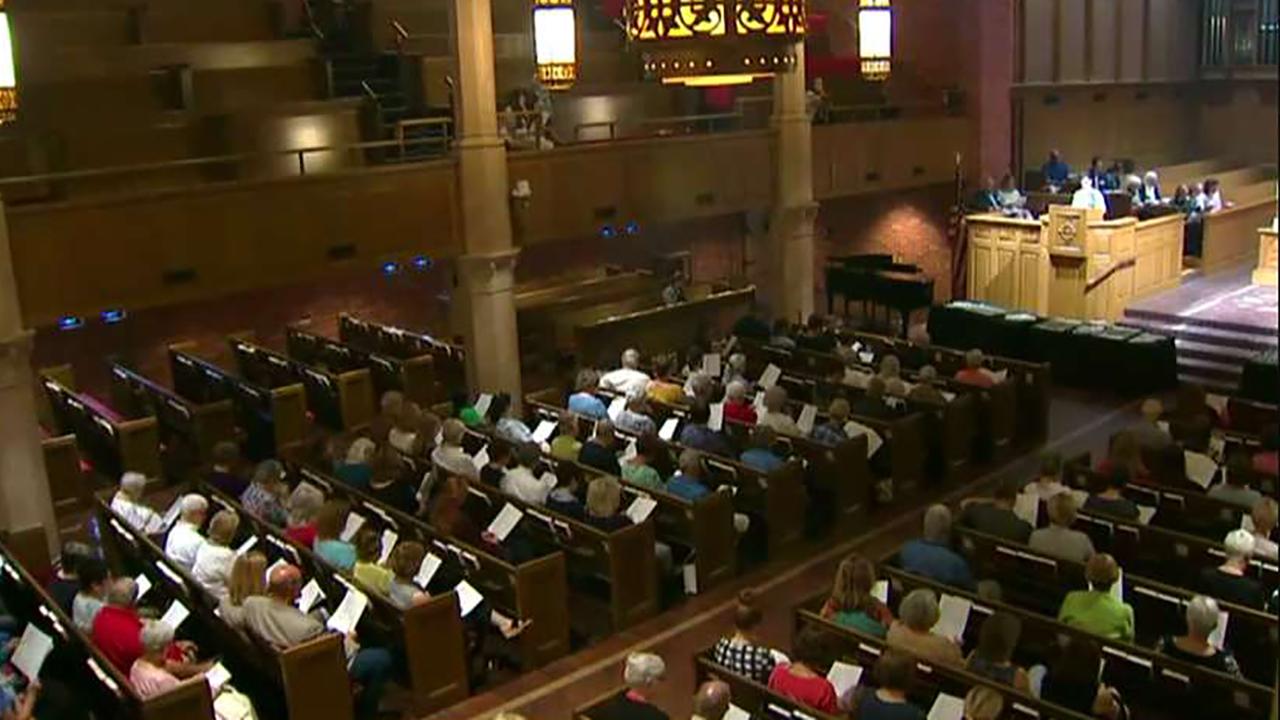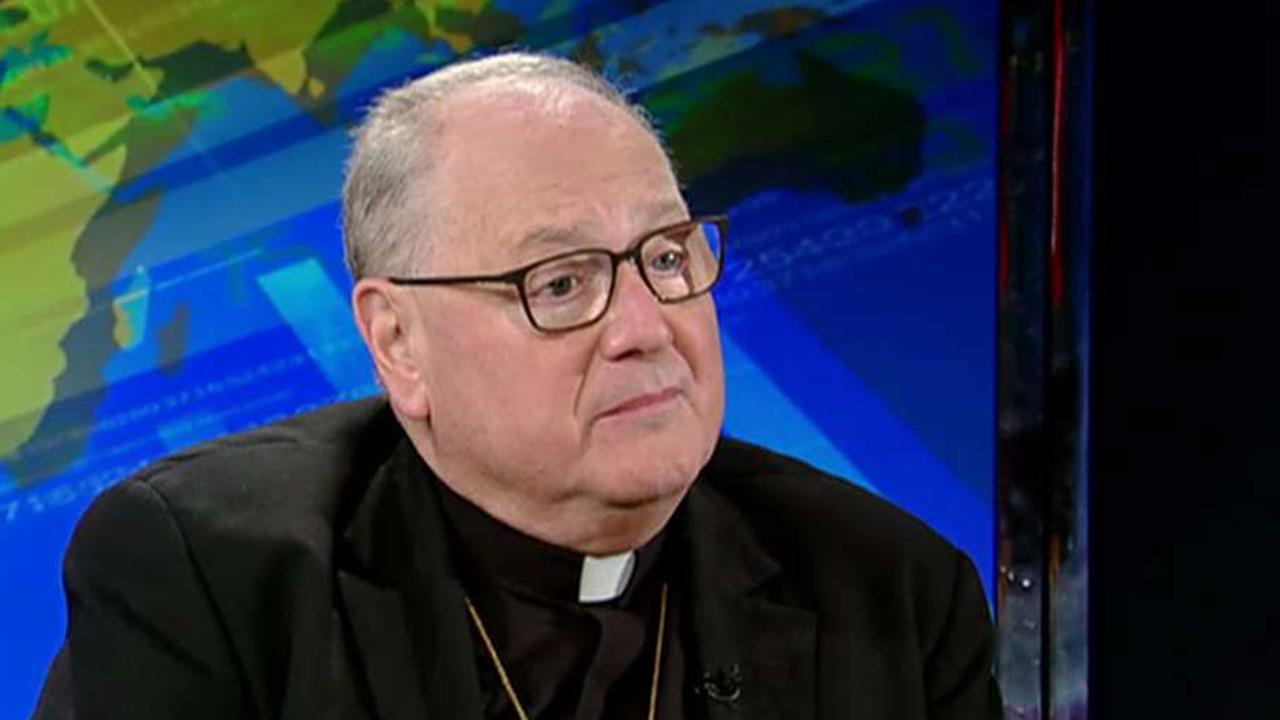US clergy members say their jobs are stressful: ‘We need help, too’
Clergy members say they deal with a number of worries
NEW YORK — Greg Laurie is among America’s most successful clergymen -- senior pastor at a California megachurch, prolific author, host of a global radio program. Yet after a youthful colleague’s suicide, his view of his vocation is unsparing.
“Pastors are people, just like everyone else,” Laurie said by email. “We are broken people who live in a broken world. Sometimes, we need help too.”
Laurie’s 15,000-member Harvest Christian Fellowship, based in Riverside, California, was jolted in September by the death of 30-year-old associate pastor Jarrid Wilson. He and his wife had founded an outreach group to help people coping with depression and suicidal thoughts.
"People may think that as pastors or spiritual leaders we are somehow above the pain and struggles of everyday people," Laurie wrote after Wilson’s death. "We are the ones who are supposed to have all the answers. But we do not."
There is similar introspection among clergy of many faiths across the United States as the age-old challenges of their ministries are deepened by many newly evolving stresses. Rabbis worry about protecting their congregations from anti-Semitic violence. Islamic chaplains counsel college students unnerved by anti-Muslim sentiments. A shortage of Catholic priests creates burdens for those who remain, even as their church’s sex-abuse crisis lowers morale. Worries for Protestant pastors range from crime and drug addiction in their communities to financial insecurity for their own families to social media invective that targets them personally.
Adam Hertzman, who works for the Jewish Federation of Pittsburgh, witnessed the emotional toll on local rabbis after the October 2018 massacre that killed 11 Jews at the Tree of Life synagogue.
“Somehow in the U.S. we expect our clergy to be superhuman when it comes to these things,” he said. “They’re human beings who are going to feel the same kind of fear and numbness and depression that other people do.”
It’s difficult to quantify the extent of clergy stress, nationwide or denominationally. But a 2018 Gallup poll bears out a common impression that clergy no longer enjoy the same public esteem as in the past. Only 37 percent of American rate members of the clergy highly for honesty and ethics, the lowest rating in the 40 years Gallup has asked that question.
“Not very long ago, they were seen as one of the pillars of the community,” said Carl Weisner, senior director of Duke Divinity School’s Clergy Health Initiative. “There has been some loss of status... and that does add to stress.”
Stress — and rewards — come in many forms for Rodney McNeal, 54, an Army veteran and social worker who has pastored Second Bethlehem Baptist Church in Alexandria, Louisiana, for nearly eight years.
Officially, the African American church has 300 members but only about 130 attend a typical service, he said.
“They don’t understand that I get tired like they get tired,” he said. ”They want you to be at their constant beck and call.”
He has attended five seminaries but never completed them. The courses, he said, didn’t cover all he sees on the job.
“The preaching part is the easy part,” he said. “Had I known the ugly side of ministry -- the hospital visits, burying the dead, being in the room when someone is dying and trying to comfort their family... Had I known all that, I don’t think I would have accepted being a pastor.”
What keeps him going?
“I will be out in the community and somebody will say ‘Hey man, you changed my life,”’ he said.
Episcopal Bishop Chilton Knudsen, from the vantage of a nearly 40-year career, cites several factors affecting the clergy’s morale -- including sex-abuse scandals that have rocked several Protestant denominations as well as the Catholic church.
“As the scandals became public, the public trust of clergy has dropped a little notch with each revelation,” said Knudsen, 73. “Even if you never had a scandal, there’s still a taint by association.”
“At the same time, the clergy has more complicated situations come across their doorstep,” she said. “There’s a wearing-down effect... they’re thinking, ‘I’ve spent all these hours with people trying to do good things, and I’m just getting nowhere.’”
Another challenge, she said, is the willingness of some churchgoers to engage in “clergy bashing.”
“Sometimes your congregation is polarized -- a group who wants you gone and believes another priest will be so much better, and a group who are supportive,” she said. “People are acting out, circulating rumors about you in email chains -- it’s traumatic.”
The National Association of Evangelicals, which represents more than 45,000 churches in the U.S., published research in 2016 detailing pervasive financial stress among its pastors. Of more than 4,200 pastors surveyed, half earned less than $50,000 a year; 90 percent worried about insufficient retirement savings.
For Muslim clergy in America, the stresses of their jobs are often magnified by the awareness that their communities face prejudice and suspicion.
“We’re framed in this idea that somehow we’re a fifth column trying to take the country down,” said James Jones, a Manhattan College religion professor and vice chair of the board of the Islamic Seminary of America. “We’re asked to prove ourselves -- that we are patriotic -- in ways that other people aren’t.”
Adeel Zeb encountered anti-Muslim sentiment head-on as Islamic chaplain at Duke University in 2015. The school invited Muslim students to give their call to prayer from the bell tower of the campus chapel, only to withdraw the invitation -- citing safety concerns -- amid a backlash that included death threats and outraged criticism from prominent Christian figures such as evangelist Franklin Graham.
Zeb, now chaplain at the five-college Claremont Colleges network in California, described Duke’s backtracking as “a hard call.”
“Students’ and staff’s lives were being threatened,” he said. “You don’t want to live with that on your conscience -- one of your students getting shot and killed.”
At Claremont, Zeb ministers to about 300 Muslim students. Most grew up in the post-9/11 era that kindled anti-Muslim sentiment among some Americans.
“Many of the students here haven’t seen much of the blessing or sweetness of being a Muslim in the U.S.,” he said. “They usually see the curse of it.”
In September 2017, on the first day of Rosh Hoshana -- the Jewish new year -- a security guard found a hateful anti-Semitic message scrawled outside Temple Sinai -- home to the oldest Jewish congregation in Oakland, California.
Rabbi Jacqueline Mates-Muchin rushed to the synagogue and devised a plan before worshippers gathered for morning services. As they arrived, she encouraged them to write positive messages on sheets of butcher paper, which then covered the graffiti until workers could paint over it.
“Love Not Hate” and “Stronger Together” were among the multi-colored messages.
Mates-Muchin says her congregation was heartened by an outpouring of support from civic and religious leaders. But the incident -- and the subsequent deadly attacks on synagogues in Pittsburgh and Poway, California -- took a toll.
Since the Pittsburgh massacre, she said, “I don’t begin a service without having a rough plan of where I’d direct people if someone came in with a gun.”
WORKERS ARE MORE STRESSED TODAY THAN BEFORE, DATA SHOWS
During that span, her synagogue has beefed up security measures -- more lighting, security cameras and guards. For the most recent High Holy Days, synagogue leaders deployed armed off-duty police officers.
49% OF WORKERS ARE STRESSED OUT: HERE ARE THE BIGGEST CULPRITS
Rabbi Amy Bardack, director of Jewish Life and Learning at the Jewish Federation of Pittsburgh, helped coordinate support for local rabbis after the Tree of Life massacre.
CLICK HERE TO GET FOX BUSINESS ON THE GO
“No one learns about this in rabbinical school,” she said.
Faced with such deliberate anti-Semitic attacks, Bardack said, the rabbis “are both the wounded and the healers.”



